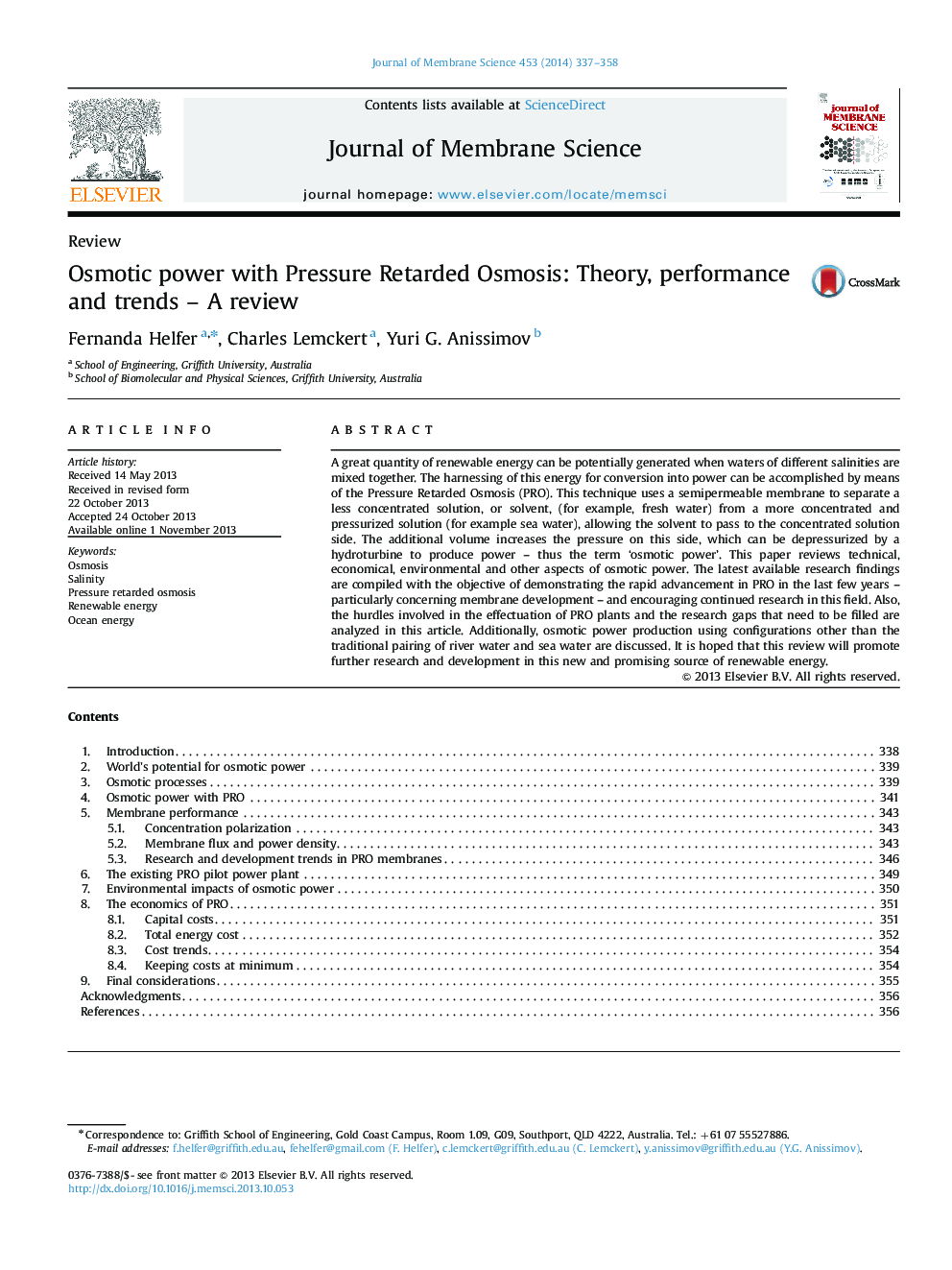| Article ID | Journal | Published Year | Pages | File Type |
|---|---|---|---|---|
| 633759 | Journal of Membrane Science | 2014 | 22 Pages |
Abstract
A great quantity of renewable energy can be potentially generated when waters of different salinities are mixed together. The harnessing of this energy for conversion into power can be accomplished by means of the Pressure Retarded Osmosis (PRO). This technique uses a semipermeable membrane to separate a less concentrated solution, or solvent, (for example, fresh water) from a more concentrated and pressurized solution (for example sea water), allowing the solvent to pass to the concentrated solution side. The additional volume increases the pressure on this side, which can be depressurized by a hydroturbine to produce power - thus the term 'osmotic power'. This paper reviews technical, economical, environmental and other aspects of osmotic power. The latest available research findings are compiled with the objective of demonstrating the rapid advancement in PRO in the last few years - particularly concerning membrane development - and encouraging continued research in this field. Also, the hurdles involved in the effectuation of PRO plants and the research gaps that need to be filled are analyzed in this article. Additionally, osmotic power production using configurations other than the traditional pairing of river water and sea water are discussed. It is hoped that this review will promote further research and development in this new and promising source of renewable energy.
Related Topics
Physical Sciences and Engineering
Chemical Engineering
Filtration and Separation
Authors
Fernanda Helfer, Charles Lemckert, Yuri G. Anissimov,
